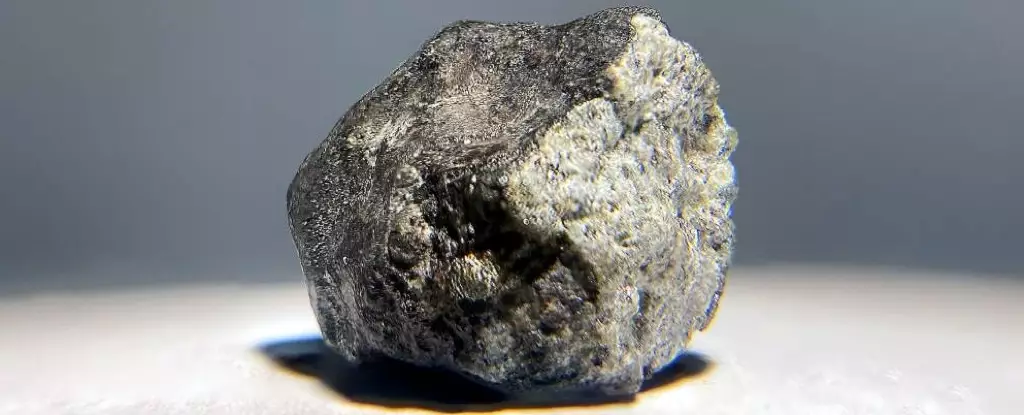Meteorites have captivated scientists and space enthusiasts alike, acting as direct messengers from the cosmos that can shed light on the history of our Solar System. For years, understanding the origins of these celestial fragments has presented a formidable challenge. Until recently, only a diminutive percentage of meteorites found on Earth were confidently traced back to their source bodies in space. However, exciting new studies have emerged that enhance our understanding of meteorite origins, offering compelling evidence that more than 90% of these extraterrestrial travelers may actually stem from a limited number of parent bodies in the asteroid belt.
Research conducted primarily by a collaboration involving the French National Centre for Scientific Research, the European Southern Observatory, and Charles University in the Czech Republic has significantly propelled the understanding of meteorite origins forward. Their focus centers on H chondrites (high-iron) and L chondrites (low-iron), which collectively represent approximately 70% of meteoric material landing on Earth.
Chondrites, with their unique formation process involving the rapid cooling of molten rock, offer rich insights into cosmic history. By analyzing specific characteristics of these meteorites, such as their composition and cosmic-ray exposure ages, scientists have been able to identify three main asteroid families—Massalia, Karin, and Koronis—as primary sources of these common meteorites. Notably, the existence of associated dust bands provides robust corroborative evidence linking meteorites to their respective asteroid families.
One of the revelations from these studies is the timing of significant collision events within these asteroid families. The Massalia family, for instance, experienced major break-ups 466 million and 40 million years ago, while the Karin and Koronis families were affected by collisions approximately 5.8 and 7.6 million years ago, respectively. These historic cosmic events played a crucial role in populating the asteroid belt with a multitude of fragments, many of which inevitably found their way to Earth, creating a timeline that complicates our understanding of the Solar System’s evolution.
The researchers employed innovative techniques to date these notable collisions, unlocking a temporal framework that contextualizes meteorite falls within a broader cosmic narrative. The implications are profound; recent collisions suggest that many of the meteorites currently enhanced Earth’s atmosphere are products of a cosmic landscape that is dynamic and ever-changing, with significant geophysical upheavals enabling the dispersal of these celestial bodies.
Beyond H and L chondrites, the research also expanded its scope to include rarer meteorite types, raising the overall number of accounted-for meteorites to over 90%. This study included contributions from lesser-known asteroid families such as Veritas, Polana, and Eos, highlighting the diverse origins of meteorite samples. These efforts not only augment the classification of meteorites but also encourage a more nuanced understanding of their roles within the Solar System’s narrative.
The findings underscore the importance of continuous observation and data collection. With potential meteorite sources still underexplored, researchers in this field remain enthusiastic about identifying and characterizing additional types of meteorites. The resulting knowledge could unveil more secrets about the evolution of planetary bodies, enriching our grasp of the past while illuminating potential future scenarios.
The impact of these studies extends beyond understanding the origins of meteorites; they also provide pivotal insights into the dynamic processes that govern our Solar System. By comprehensively detailing the relationships among meteorites, asteroid families, and historical collision events, scientists can make educated predictions about the trajectories of asteroids and their likelihood of interacting with our planet.
With the continued advancement of observational technologies and analytical methodologies, the research community remains committed to unearthing further mysteries of the cosmos. The ultimate goal is to create a full catalog of meteorite origins that could reshape our understanding of cosmic phenomena and contribute to planetary defense strategies against potential impacts.
Thus, as we stand on the brink of a more complete narrative surrounding meteorites, we gain not only knowledge of their origins but also a deeper appreciation of the trials faced by our Solar System. These studies do not simply fill gaps in our knowledge; they inspire a greater curiosity and an ongoing commitment to exploring the vast universe in which we reside. The efforts of researchers pave the way for future discoveries, ensuring that even the smallest fragments from space will continue to illuminate the mysteries of our cosmic relationships.



Leave a Reply